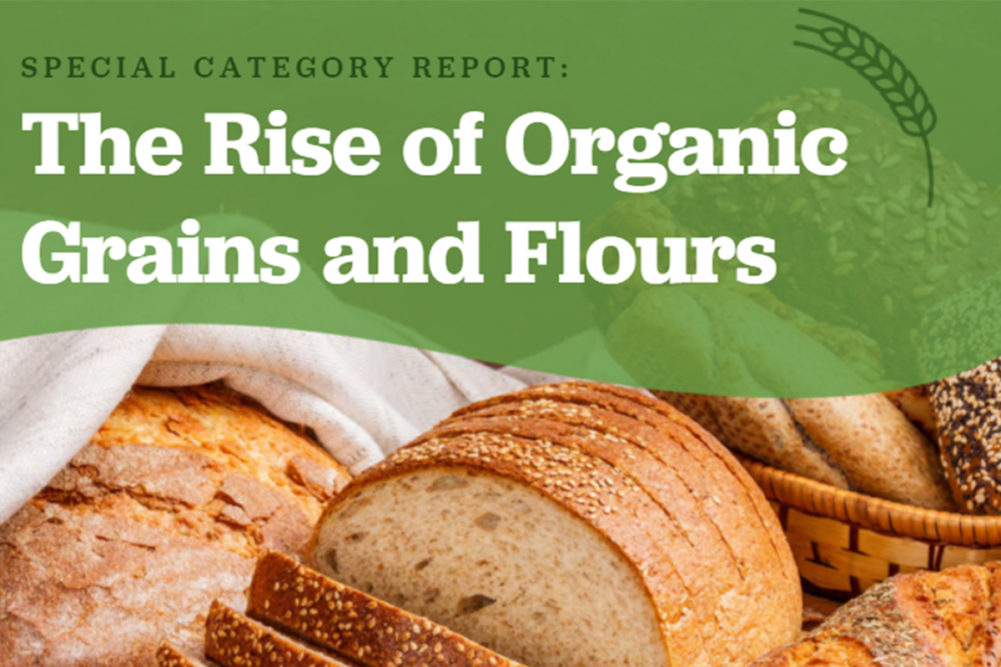Organic is here to stay. This once-niche category continues to enjoy steady growth and mainstream holding power in supermarkets across the United States. From the early 1990s to the early 2000s, organic made major strides with increases in certified organic acreage and organic food purchases eclipsed conventional food purchases in 2000.
The Organic Trade Association (OTA)’s 2020 Organic Industry Survey showed that even though the food segment is dominated by produce, bread and grains take up 11.4% of these sales. And it continues to grow. In 2019, OTA recorded that the bread and grains category sales hit $5.7 billion, which was up 6% from 2018.
And not even the coronavirus (COVID-19) pandemic can slow this growth. In fact, organic bread sales growth numbers from Nielsen show that dollar sales increased 8% from 2018 to 2019, but sales grew 19% from 2019 to 2020. Organic flour surged 51% in sales from 2019 to 2020, outpacing the entire flour category, which grew 33% during the same time. OTA’s survey also showed that 90% of likely organic shoppers said that organic would become even more important during the pandemic.
“The health associations of natural and organic foods will make them more important than ever during a global health pandemic, as many adults seek ways to support overall wellness during uncertain times,” said Karen Formanski, health and nutrition analyst for Mintel.
Mintel’s report on the natural and organic food shopper revealed that 55% of organic consumers purchase these foods because they believe them to be healthier than conventional products, while 23% make these purchase decisions based on sustainability concerns. While adults between the ages of 25 and 44 make up the bulk of organic shoppers, these motivations hold steady across different age demographics.
Organic consumers are typically younger and more likely to be parents, but older demographics offer a growth opportunity for the organic food category as this group becomes more interested in functional health ingredients. Mintel reported that 83% of consumers over the age of 65 said they typically purchase conventional products while only 28% of this group said they typically buy organic ones.
The higher price tag of organic foods, however, remains the main barrier for non-organic shoppers. Mintel noted that 56% of these shoppers don’t believe organic products are worth the price. There is hope, though, as 42% of all shoppers said they would buy more natural and organic foods if they were more affordable. As the US emerges from the pandemic and some anticipate an economic recession, Mintel predicted that the growth rate of the organic food category will slow.
“The economic downturn may cause fringe users who buy organic only occasionally or only in certain categories to switch to conventional products,” Ms. Formanski said. “More affordable private label natural and organic options will appeal to engaged users looking to save money.”
Mintel’s survey showed that 98% of natural and organic food and drink purchases include private label offerings at least some of the time.
To read more about how the organic grains category is performing with consumers and how agriculture is catching up to demand, check out this special category report, written by the editors of Baking & Snack and Milling & Baking News and sponsored by Ardent Mills.






